Indoor Gardening: January Seedlings [Gardening]
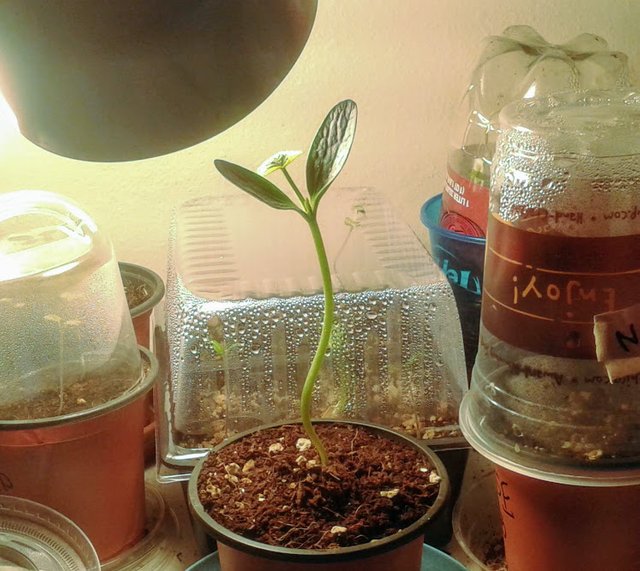
Earlier this month I started growing some seeds indoors. I kept a journal and photos of my ongoing results.
This article while demonstrate some of the tools and strategies I am using to get my seedlings started in winter. Learn from my mistakes, and grow!
Check out my progress.
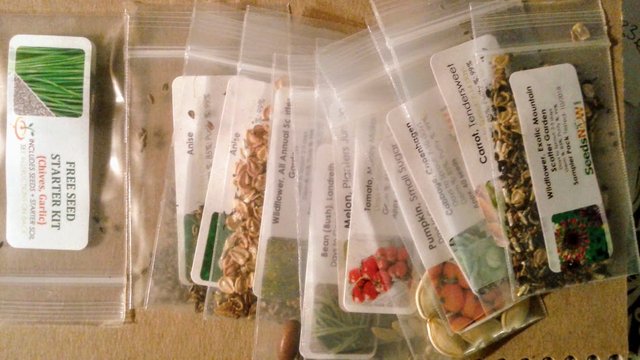
New seeds arrived in the mail.
- #wildflowers
- #tomato (Money Maker, Delicious Beefsteak)
- #pumpkin, #melon (Planters Jumbo)
- #pepper (Anaheim)
- lettuce (Bibb)
- #garlic-chives, #carrot (Tendersweet, Cosmic Purple)
- #chive (Tokyo Bunching Green Onion)
- #cabbage (Copenhagen)
- #bean (bush Landreth)
- #anise
Also have a list of seeds I tried last year that I want to try again. Many of these are saved seeds and leftover seed packets:
- #turnip
- #tomato (Roma, Rapunzel)
- #tobacco (flowering variety)
- #radicchio
- #peppers (Ancho Poblano, Banana)
- #cumin (Black)
- #cilantro #coriander
- #brussels-sprouts
.jpg)
This is my new seed starting dome. $1 at the dollar store.
The clear plastic dome didn't fit very well, leaving a large air gap where it connects to the black plastic. It had curved corners and the bottom tray had sharp square corners. A pair of scissors easily fixed this by trimming the edges the lower tray to fit the shape.
Normally a seed starting dome has 20 or more cups. Way too big. Not great for the home gardener hobbyist who makes lots of mistakes and experiments a lot like I do. Usually I want to get started by testing out some of my seeds, and learn which ones will survive well indoors, and handle transplants, and which ones won't.
That's why I love having this tiny dome. 12 cups is plenty for my needs. The best thing about a smaller dome is that you can move it closer to the light bulb immediately after the seeds sprout, and they will receive the light more evenly. In the bigger domes, you need a large industrial sized grow light positioned perfectly to supply light evenly to all parts of the tray, and sometimes it is still uneven. I also appreciate that the smaller dome I am less likely to spill the contents when I move it. Anyone who has ever tried lifting 20 or more delicate seedlings balanced precariously inside a weak plastic tray knows what I'm talking about.
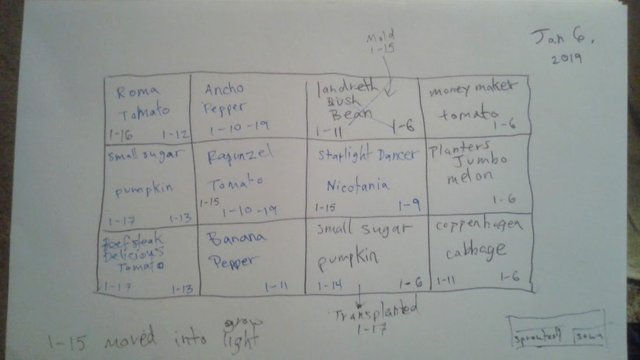
This simple chart shows the date a seed was sown, and the date it sprouted.
Any other important dates are also listed, such as problems with mold, disease, or when they became so large they had to be transplanted out.
I call this my Seed Map, because it helps me to identify what I planted, and where they are located in the tray. No need for flimsy labels that might interfere with the growth of the tender seedlings.
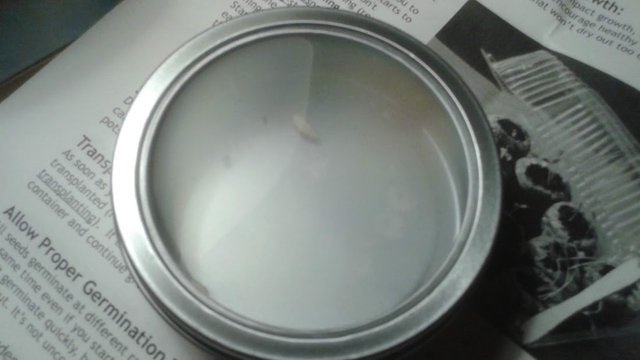
This was another dollar store find. It's a little office container made of metal with a clear plastic window. What I do is pour hot water inside, and let the seeds soak for about 12 hours before planting them in seed mix.
I place this on the heat vent, and it keeps the water warm, but not hot. The lid holds in all the humidity.
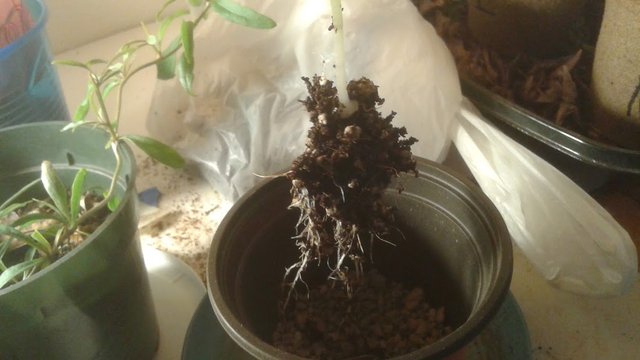
This is what a super healthy root system on a seedling should look like!
To transplant, I dig around the edges using a chopstick, and feel around to slide the root out of the tray. Lift the seedling by a strong set of leaves. Never grip the fragile stem.
Yes, that's my pumpkin. It emerged within a few days, and quickly outgrew the height of the dome, and muscling its way out.
Pumpkin is my gardening gray whale. My purple buffalo. Been trying to grow a proper pumpkin for three years now, and every year I learn more from my mistakes.
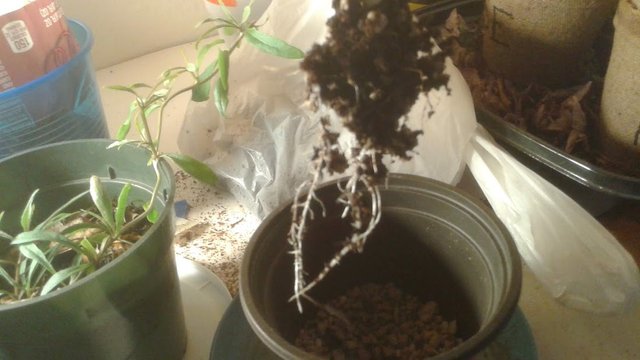
This year the newest trick up my sleeve is in the soil mix. I mixed 50/50 coconut coir with horticultural pumice. This mix is very sterile, and it seems to be providing a perfect mix of moisture and aeration.
The mad scientist in me has been trying to concoct a better plan to improve the soil, using what I have learned in bonsai to improve plant root spread. Pumice stone provides sharp edges to split root ends, attracts humidity, and increases airflow. This promotes bushy roots that really grip the soil well, and also prevents the formation of singular taproots that go thick and deep. Singular roots (taproots) are problematic and can cause sudden plant death when any part of the root becomes rotted, dried out, over-heated, or damaged from the cold.
Pumice is also very lightweight, but heavy enough that seedlings will have to exert a little bit of muscle in order to emerge through the surface layer to find the sunlight. The rocks stay loose and are easy to dislodge, unlike peat, which sometimes forms a goopy cement filmy crust. The rocks also allow trace amounts of light to pass through the surface to help the seed root and stem find the best way through. Often times the roots will form a curvaceous spring shape around the stones, rather than a long shoelace string that quickly circles the base of the pot. The spring shaped roots will have more surface area through the volume of the soil than the long stringy ones.
These factors ensure that a seedling is developing good nutrition and exercise from day one to help it become immune to disease and insect problems.
The only problem with a pumice soil is that its loose. Lifting a seedling from the rocks would probably tear all the roots off and cause the rocks to spill out. I needed something to hold them to stick together, and to provide a bit more lasting moisture retention the rocks can't provide. That's why I added the coconut coir. It has long strands of super absorbent material that will weave and rope around the rocks, and keep everything moist and held tightly together.
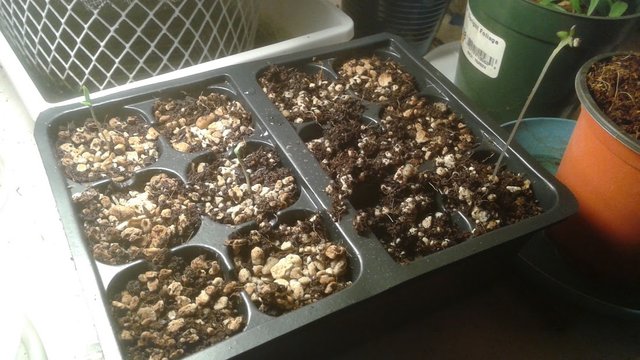
Transplanting is still a little bit messy, but most of it came out in one piece, thanks to the roots of the pumpkin gripping around the gravel pieces.
On the right, a cabbage has rocketed up to its full height. This one was the first to sprout.
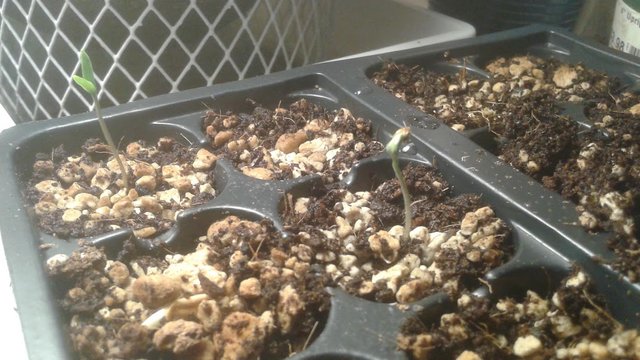
On the left, tomatoes are opening their seed leaves.
Many seeds have not yet sprouted. I'll be returning them underneath the plastic dome.
Humidity, light, and warmth are three things I am attempting to maintain while the seeds are germinating and sprouting.
Until more seeds sprout, I choose to let my mini greenhouse sit on the heat vent on my floor. The temperature gauge shows that the temperature fluctuates and stays just under 80 degrees F if place directly on top, and slightly lower if I move it off to the side slightly.
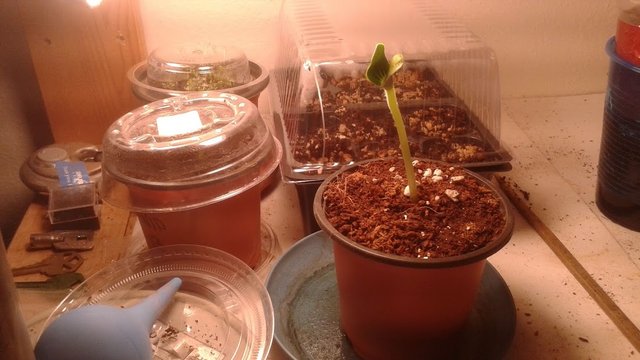
Here is the transplanted pumpkin, beside the mini greenhouse under my grow lights.
I don't use any fancy equipment.
Ordinary super bright light bulbs. One is LED. The other is CFL. Neither gets hot, and they offer different shades of the light spectrum. The lights turn off and on by themselves because they are plugged into a outlet timer. That's about as advanced as I get, because I like to do things manually whenever possible, but I can't sit in the room and watch them grow all day long.
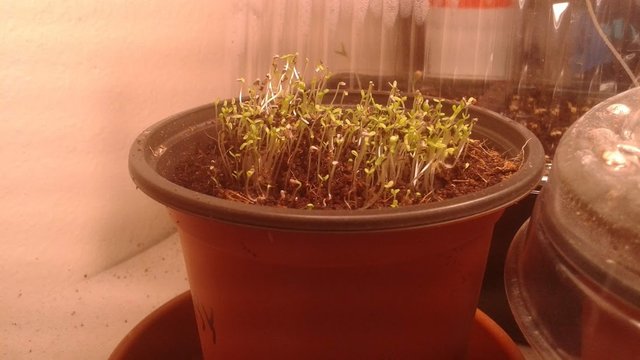
Almost forgot!
These are #daisies. I threw the whole bag of seeds in here. They are growing overly dense, but as you can see, all the seedlings are supporting each other, and holding in the humidity. My plan was to have these grow as a small meadow cluster, to transplant into the yard in the Spring.
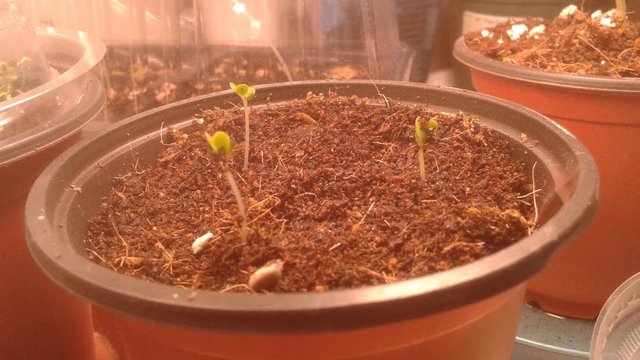
This is #turnip.
I had a terrible time growing these last year. This is a seed that is recommended for direct sowing, but they do not do well in my climate, weather, soil, and with the nearby rodents outdoors. Even after weekly sowing seeds, the seedlings always fail to produce anything more than one tiny set of true leaves.
Hopefully I can get these three to develop well indoors so they will become mature enough to handle being transplanted into the savage lands outside.
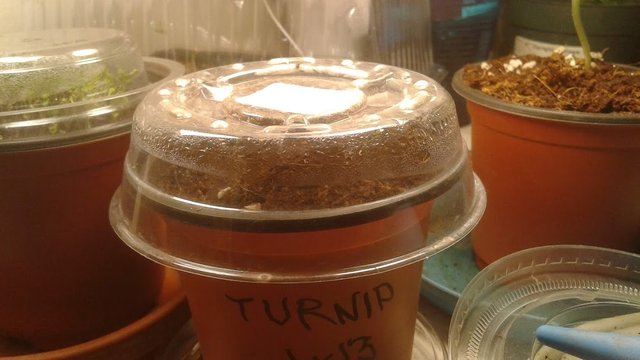
Using the same seed mix I described above, and my own make-shift humidity chambers, my seedlings are going to be spoiled this year.
Wish me luck!
I'm looking forward to a summer of healthy veggies to eat, enjoy, and share. Something about seeing these seeds springing up taller every day, as the first thing I see when I wake up, it really helps me start the day with more hope and inspiration on days when I am feeling lacking.
Is that stupid to invest my thoughts and emotions into such a trivial thing as a wimpy seedling to give me hope on days when I also feel weak and failing? Perhaps plants do have a healing nature, even without eating them! Let me know your thoughts.
#homesteading #naturalmedicine #flowers

Your wimpy seedlings give me joy from far away in the tropics, so I can see how healing this investment of time and effort is for you up north. I think any time you are successful growing anything, you are a winner, and the fails just make you stronger and better able for next time.
Your organization is very impressive and you will be rewarded even more at harvest time. My mom was a gardener and she would have loved to see this post. You make me think of her in the way you work. Best of luck for this growing season.
Wow, that was one of the most encouraging comments I've ever read. I love it when readers can relate to something I share with something they have experienced in their own lives.
Even wimpy little seedlings, apparently have the power to heal strangers (or friends I haven't yet met) in restorative ways.
Something about nature always awakens forgotten memories in my early life. Memories have the power to make us literally feel like we are in another time and place, to potentially empower us.
I'm on a bus that is 1.5 hours late going to Singapore now and the driver is very busy and animated on the phone. I'm glad to come back to your restorative seedlings at this moment, because I sure cannot sleep lol.
My mom would have loved this. We moved a lot and she gardened no matter what. When we moved, she would always say, "I hope the new people will take care of the garden."
I still move a lot so I do not garden too often, but I will when I get the chance. As soon as I get anywhere that I can do it, I start to water the plants :)
Be sure to post progress as you go along, I know I am not the only person who appreciates the chance to see how you are doing.
I followed you and so glad to be connected to another southpaw :)
Seed Map. Now its al coming together and I'm starting to really know who you are lol honestly I think your attention to detail and patience either come from your day job or your attention to detail and patience make your day job a good fit. One or the other. btw regarding your question, creating and creativity are always good for the soul
I've been wanting to do indoor gardening for a long time. but I think my room doesn't have enough sunlight.
it's nice to see the seeds grow. Congrast for you.
what a good post You taught me many things that I did not know. I have some things planted. but I'll have to try another type of seed. thanks for sharing
So what have you planted so far?
for now I have chives, and cilantro too but never grow, I'm still trying with it...
I live in an apartment, I do not have a big garden. that's why I limit myself to things that I know can grow in pots
I have the same seed tray ive been using for 2 years now! lol
Glad to hear. No cracks or leaks after 2 years, that is impressive.
Yeah i use it for clones.
This is great, thanks for sharing, I've been wanting to do a simple seed start inside this year, I have space in my garage but it's not heated so thinking I can't do it there, unless I get one of those heat pads. Curious about the lighting, my understanding is the LED spectrum is a weird energy for plants as for us as well, thinking I would try a full spectrum old incandescent? Those get hot though. Are you not using potting soil, because of problems in past? I have lots of potting soil, maybe I could add some coconut coir? Also, might be a cool contest or project of list of seeds peeps are looking to trade? I have a ton of heirloom seeds I would give away or trade?
Not sure I want to get into seed trading using my steem profile. I do like to try out new things once a while. There is a budding seedshop forming hear among homesteaders, lead by @sagescrub. On youtube, I have participated in a few different seed giveaways, and that has been a fun way to get started for me.
In regard to light bulbs, you might be right. In my experience, it is better to pick bulbs that are not heated for seed growing projects. There is a high probability they will scorch the plants, and I worry that they might cause a fire if I walk away. I don't like that hot smell.
Plastic insulation will really help hold some heat around your plants in a garage if that is the only place you can grow. It breaks the windchill, and something kind of magical happens with the air and temperature inside once humidity starts to bead up inside. Being near a heat source is the best, even if it's a space heater, your water heater, or the warmer wall near the indoor doorway.
Peat pods and peat soil mixes are supposed to be sterile, but they often form mold when I use them. I think it is because my climate has lots of mold spores in the air all year round. The little mesh sleeves around the peat pods never disintegrate or compost, so they are more problematic for roots and transplants later on. The peat cups, I use them sometimes, but they also form mold, and even moss sometimes. Coir rarely forms mold directly on the soil. If the mold forms, it attaches to the seedling because it is too dark and wet, or it was contaminated.
Try different lightbulbs out to see what works for you. I know growers who use regular 100 watt lightbulbs, and they do fine. I try to get higher wattage if possible, but not super-sized. Every bulb burns out eventually in a year or two. Look at the kelvin scale to determine if the bulb is considered closer to the blue-white or red-white spectrum. I use one of each, and call it good. Again, I am not a professional, but you can see my results. Can always buy an industrial grow light if you are concerned or have had bad experiences from the lights. I've never needed one.
Thanks for the helpful reply mate! Great ideas.... yeah, maybe I'll experiment with different bulbs. I've had mold problems on some soil mixes too, then I started using a dilution spray of Hydrogen Peroxide water to the soil, seemed to do the trick for my peat/soil mixes. Also, did you know that some of the cheaper trays like the black potting trays my understanding is there is lead in some of them, can you believe that! I've only heard, but intend to do some more research on that, which brings me back to the coconut or hemp mediums you can use with food grade baking trays, like they do in microgreen growing.. Every little aspect needs to be looked at in terms of creating a healthier relationship to ourselves, Earth and our food supply ;)
Never heard of the lead in plastic. I'm sure it is miniscule, but still an alarmingly cheap shortcut. I'll have to learn more about that.
Hi creativetruth,
Visit curiesteem.com or join the Curie Discord community to learn more.
Whoopie! It's raining steem!
Thanks for the generosity.
wow man seems you're expert in that
love to learn from you
I agree. The very experience of planting them and seeing them grow is therapeutic. I have commented on several post on this topic how frustrated I am that I don't live in a house with land for planting.
I have a small piece of land at the end of the hall that serves as my seed starter and once the plants are big enough to be transplanted I give them away to whoever has land and wants them.
I have mostly fruit trees (tangerines, soursop, sapodilla, among others).
Great post. Good luck with those seeds.
Your garden is a place to be always. I love what you have done to the place and the various plants in there are lovely to watch always. I have to start my own garden soon.... Lol
Posted using Partiko Android